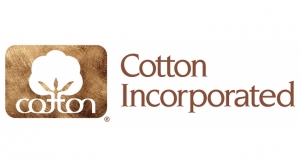U.S. cotton producers are leading the way in responsible cotton production practices. Through the support of research and implementation of technology, U.S. cotton production is on the path to continual improvement, maximizing efficiencies while minimizing inputs.
Commitment and innovation define U.S. cotton production. Over the last 35 years, the commitment of U.S. cotton producers, researchers, and industry organizations led to dramatic reductions in land use, soil loss, water use, energy use, and greenhouse gas emissions.
Innovation in technologies, management systems, and conservation created opportunities for advancements in yield while taking stewardship of natural resources for cotton agriculture to the highest levels in the world.
For the next decade and beyond, U.S. cotton producers and industry organizations are setting new environmental targets to keep pushing the frontier of sustainability and leading the worldwide effort in responsible cotton production.
The target areas and goals were established using science-based evaluations, including key performance indicators (KPIs) for producing each pound of cotton and pathways to achieve them.
In the next 10 years, the U.S. cotton industry aims to increase soil carbon by 30% and land-use efficiencies by 13% and decrease greenhouse gas emissions by 39%, soil loss per acre by 50%, water use by 18%, and energy use by 15%.
Commitment and innovation define U.S. cotton production. Over the last 35 years, the commitment of U.S. cotton producers, researchers, and industry organizations led to dramatic reductions in land use, soil loss, water use, energy use, and greenhouse gas emissions.
Innovation in technologies, management systems, and conservation created opportunities for advancements in yield while taking stewardship of natural resources for cotton agriculture to the highest levels in the world.
For the next decade and beyond, U.S. cotton producers and industry organizations are setting new environmental targets to keep pushing the frontier of sustainability and leading the worldwide effort in responsible cotton production.
The target areas and goals were established using science-based evaluations, including key performance indicators (KPIs) for producing each pound of cotton and pathways to achieve them.
In the next 10 years, the U.S. cotton industry aims to increase soil carbon by 30% and land-use efficiencies by 13% and decrease greenhouse gas emissions by 39%, soil loss per acre by 50%, water use by 18%, and energy use by 15%.


